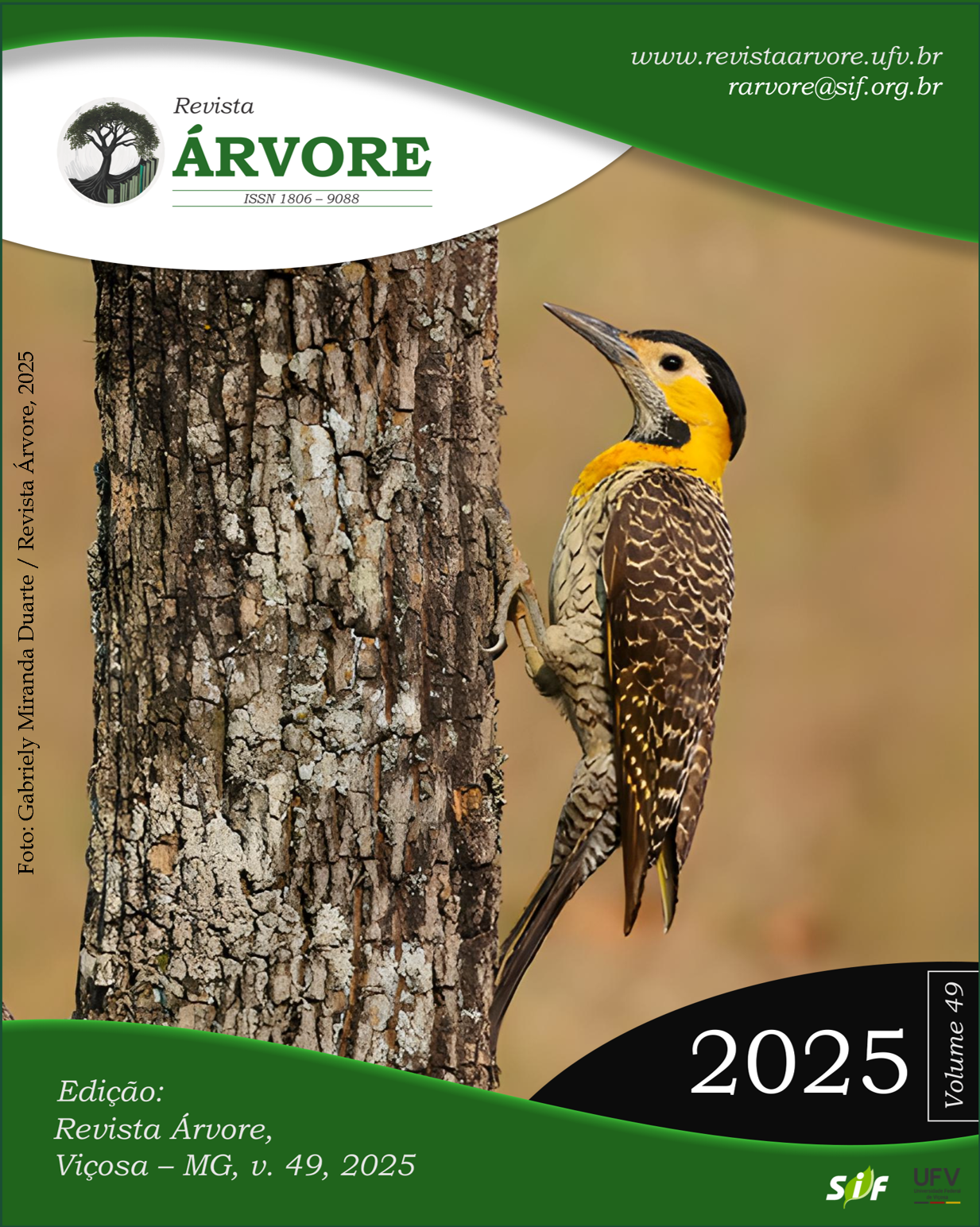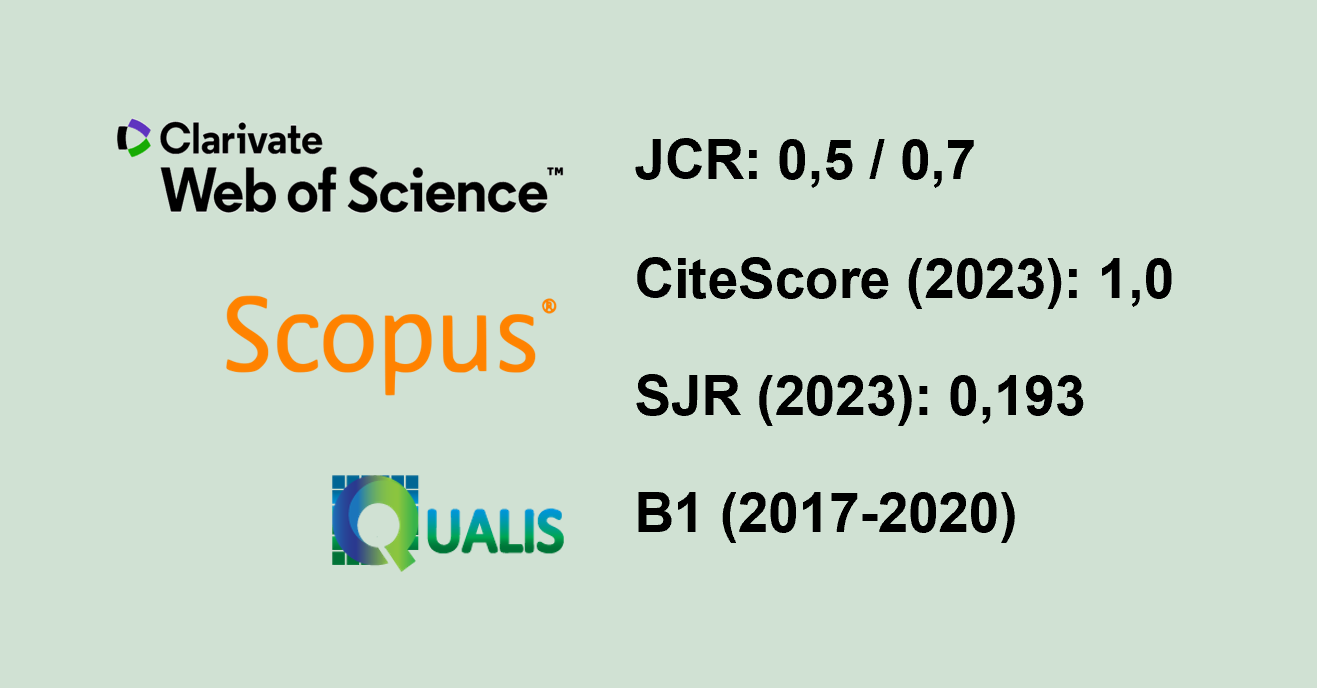Crescimento de mudas de Didymopanax morototoni em função de doses de fertilizante de liberação controlada
DOI:
https://doi.org/10.53661/1806-9088202549263900Palavras-chave:
Morototó, Osmocote, ReflorestamentoResumo
A espécie Didymopanax morototoni, conhecida como morototó, apresenta grande potencial para a indústria madeireira e a recuperação de áreas degradadas, mas a ausência de padrões técnicos adequados para a produção de mudas limita seu sucesso em campo. O uso de fertilizantes de liberação controlada (FLC) é uma alternativa aos fertilizantes convencionais, pois reduz custos e perdas. Os autores deste estudo tiveram como objetivo avaliar o efeito de diferentes doses do fertilizante Osmocote® nas características de crescimento e na qualidade das mudas de D. morototoni. O experimento foi realizado em viveiro, com delineamento em blocos casualizados, testando-se cinco doses de Osmocote® (0, 2, 4, 6 e 8 g dm-3), com formulação NPK 18-5-9 e período de liberação de cinco meses. Após 150 dias, foram avaliados os parâmetros de altura, diâmetro do coleto, número de folhas, comprimento da raiz, área foliar, teor de clorofila, massa seca e Qualidade de Dickson. Os dados foram submetidos a anova e análise de regressão (α = 0,05), sendo a dose de máxima eficiência técnica (DMET) calculada através da derivada das equações ajustadas. Os resultados mostraram que o fertilizante de liberação controlada influenciou significativamente no aumento de todas as variáveis analisadas em comparação ao controle. A melhor dose foi de 3,2 g dm-3 de Osmocote® 5M 18-5-9 mini prill, que proporcionou maior IQD para a produção de mudas de D. morototoni.
Palavras-chave: Morototó; Osmocote; Reflorestamento
Downloads
Publicado
Como Citar
Edição
Seção
Licença
Copyright (c) 2025 Revista Árvore

Este trabalho está licenciado sob uma licença Creative Commons Attribution 4.0 International License.
Todos os autores concordaram com a submissão do trabalho à Revista Árvore e concederam a licença exclusiva para publicação do artigo. Os autores afirmam que se trata de um trabalho original, e que não foi publicado anteriormente em outros meios. O conteúdo científico e as opiniões expressas no artigo são de responsabilidade total dos autores e refletem sua opinião, não representando, necessariamente, as opiniões do corpo editorial da Revista Árvore ou da Sociedade de Investigações Florestais (SIF).








